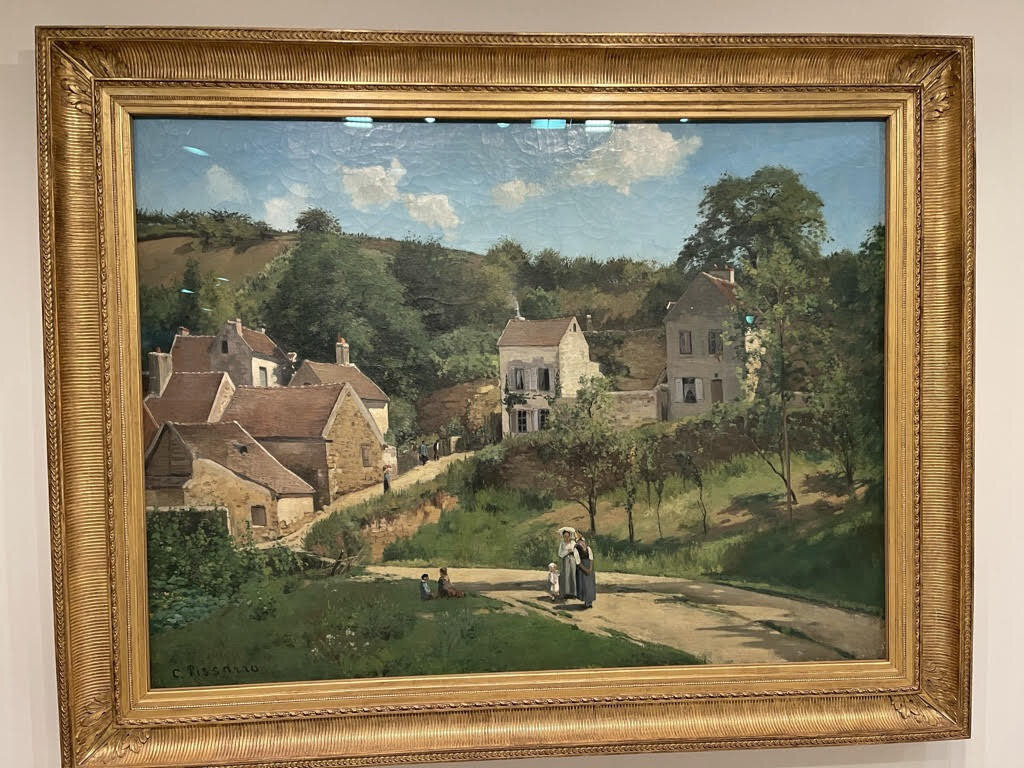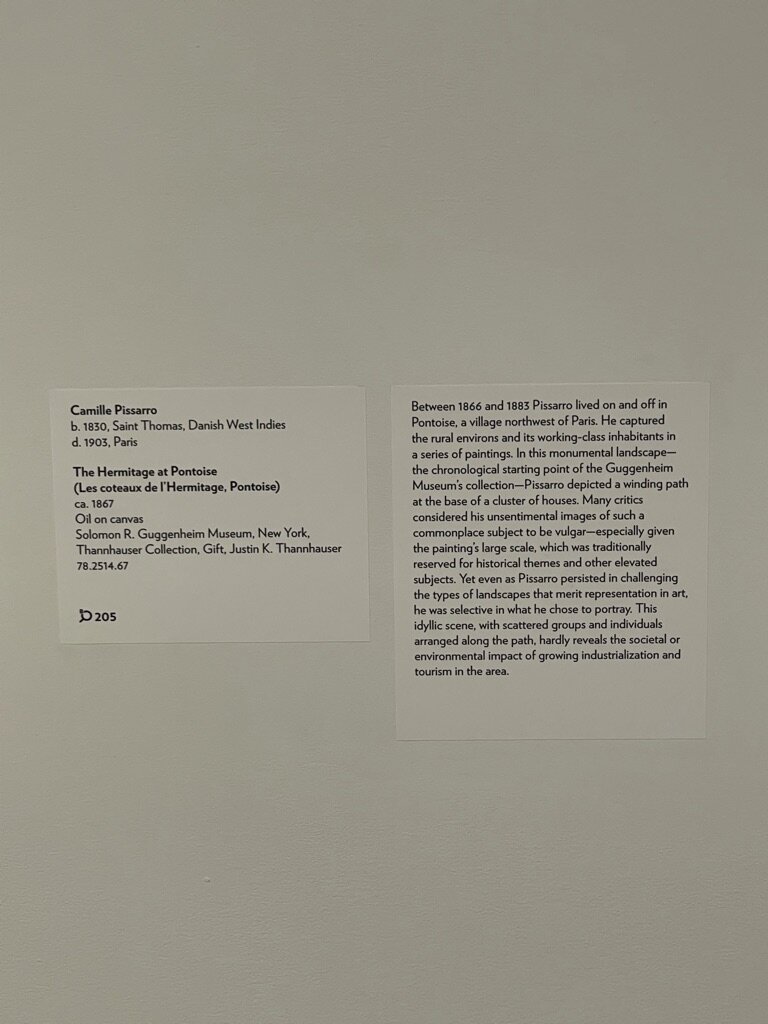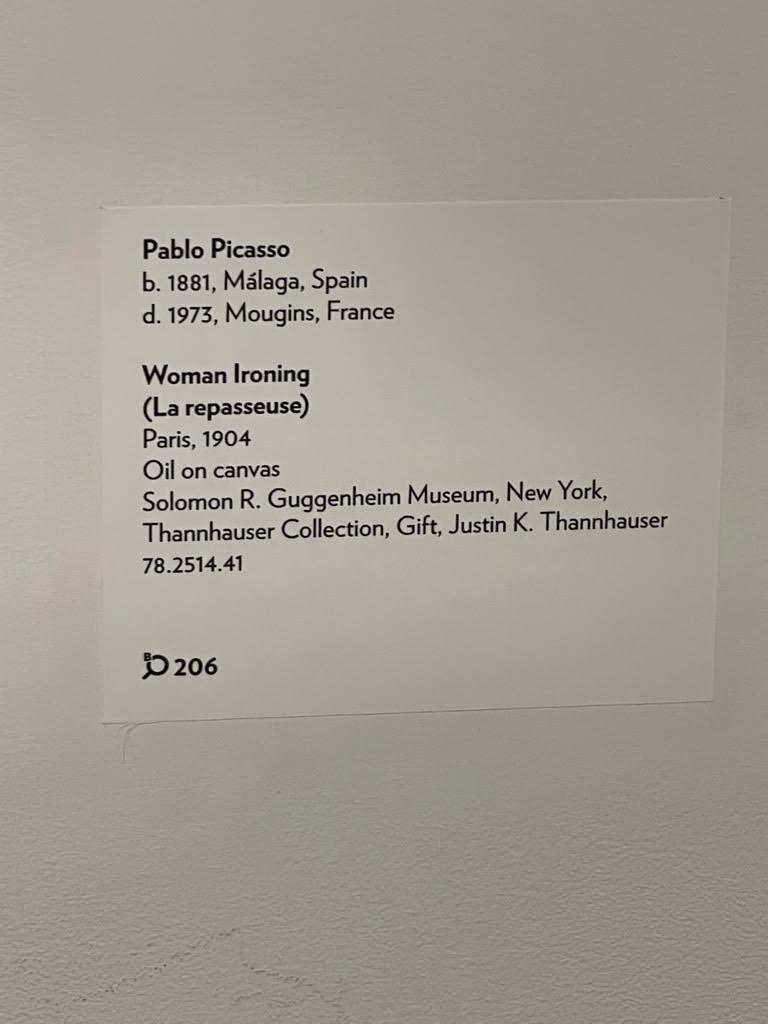Solomon R. Guggenheim Museum
Address
1071 5th Ave, New York, NY
Between 88th & 89th St.
Telephone
Website
WHAT I LIKED: Great collection, architecture, and special programs
WHAT I MISSED: The wall labels are a bit too small for me and I miss the verbal description on the audio guide
To read a summary of the blog, please click the IN SHORT button.
Museums have encountered many challenges during the COVID-19 pandemic, as have the visitors. New York’s low vision community, in particular, relies on accessible group museum tours and suffers from not being able to experience exhibitions in person. For a visually impaired person, it is sometimes very hard to manage visiting a museum independently.
To stay in touch with art, the museum, and the community, many museums now offer their accessible programs through virtual tours, and this has proved to be a widely accepted and treasured tool for the low vision community, leading to lively discussions, a new way of experiencing art, and reconnections with docents and group members.
The Guggenheim is among many museums that now offer their usual monthly program for visually impaired and blind people on a virtual platform. The Guggenheim’s VIP program, called Mind’s Eye, has adopted a virtual format and has even started a weekly conference call to describe and talk about one particular piece of art. This is a very well-received and loved add-on to the regular program. Many thanks to the organizers for this additional treat!
I am lucky to live in the neighborhood of the Guggenheim Museum in New York City on 5th Avenue at 88th Street, and I try to visit this gem independently as often as I can. I love the sight of this iconic building by Frank Lloyd Wright coming up between the trees when I walk through Central Park!
View from the rotunda towards the skylight, the Oculus.
About the Museum
The museum opened in October 1959 and is now part of the UNESCO World Heritage list. The collection focuses on art from the late 19th century up to the present day. It includes masterpieces by artists such as Cézanne, Gauguin, Van Gogh, and Pablo Picasso.
Listen to impressions about the building with verbal descriptions: Mind’s Eye: A sensory guide to the museum
The famous rotunda with the spiral ramp offers an incredible space for special exhibitions of modern and contemporary art, lectures, screenings, and performance art.
A visit to this “must see” landmark is an inspiring and rewarding mission. To make it easier for you to plan your visit, I will share my experiences while visiting independently as a VIP (visually impaired person).
Permanent Collection at the Tannhauser Gallery. Listen to a verbal description.
Entrance and Galleries
As you enter the building through the entrance on 5th Avenue, you will immediately be drawn into the unique space of the rotunda with the spiraling ramp and the oculus, the magnificent skylight high above you.
The ticket counter, to your right when you enter the building, is currently closed (as of February 2021), so you will need to purchase tickets online to visit the museum. Behind the ramp is the coat check and the check point for the tickets – also not available right now.
At first, orientation might seem a bit problematic, but as you only have to follow the ramp to see the current exhibition, you will not get lost. The side galleries are in the added-on tower and offer ramps as well as steps to access the exhibitions. When you arrive, take in the breathtaking view of the interior, enjoy the fountain at the beginning of the ramp, and listen to the sounds in this amazing space.
Heading up the ramp is always a special experience for me. I love that I do not have to worry about steps when I walk with my cane and am concentrating on the artwork. Sometimes I get so distracted by the art or the view of the rotunda that I forget where I am actually heading! There are also elevators at every floor, which might be a bit difficult to find if you are not familiar with the space. The staff is very friendly and well-trained and will help you along the way.
The Tannhauser Gallery on the second floor hosts the museum’s permanent collection, one of my favorite spots!
Camille Pissarro, The Hermitage at Pontoise (1867). Listen to a verbal description.
Labels, Audio Guide, and App
As a VIP, an independent visit to a museum is often not the easiest task. For me, one of the most challenging things is to find the label of an artwork and to read it.
At the Guggenheim, the pristine interior design with white walls, white banisters, and white niches with white labels presents a big problem for me. The labels are printed in a clear font and a good size but, depending on the light in the gallery, they are sometimes very hard for me to find.
On the website, you can download the labels, which include a photo of the artwork. This is a very helpful feature. You can also download an app to your smartphone to access the audio guide, though at this point in time, there is no audio guide available to rent at the museum. The audio guide gives you an overview of what is going on in the museum and offers audio files of artwork in the exhibitions. It is clear and easy to use.
You can listen to several verbal descriptions of artworks from the collection on the website, but this feature is not available on the app, so you cannot listen to it while standing in front of the original work, which is a pity.
The Mind’s Eye is a special program for visually impaired and blind people that offers monthly group tours, which are now held as a Zoom meeting, and a weekly conference call to verbally describe works of art and have a lively discussion about it. This is a fantastic way to stay in touch and experience art.
Pablo Picasso, Woman Ironing (1904). Listen to a verbal description.
Last, But Not Least
This “must see” museum is one of my favorite places to explore art and enjoy highly interesting international exhibitions. I like to prepare my visits beforehand through the website and the app so it is easier for me to navigate the spaces and access all the information I need. I love to go there independently, and a Mind’s Eye group tour is always a special experience for me.
Follow me on Facebook, Instagram, and Twitter, and please email me with any questions, suggestions, or feedback!
















